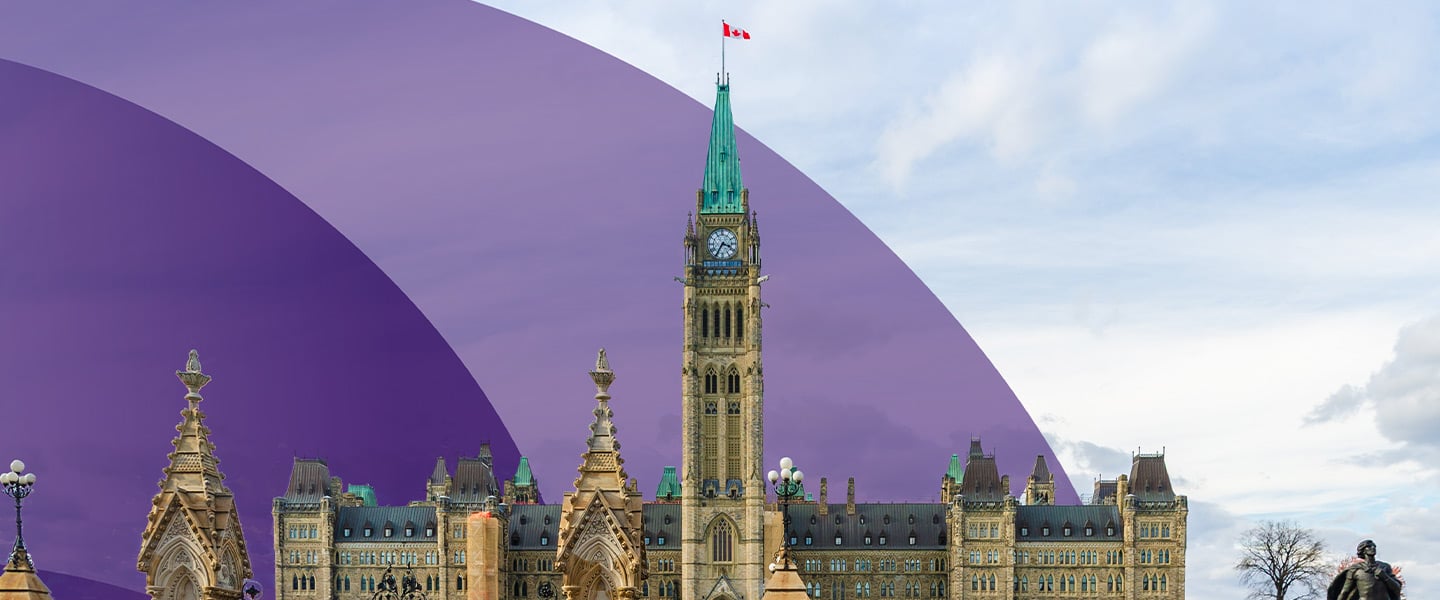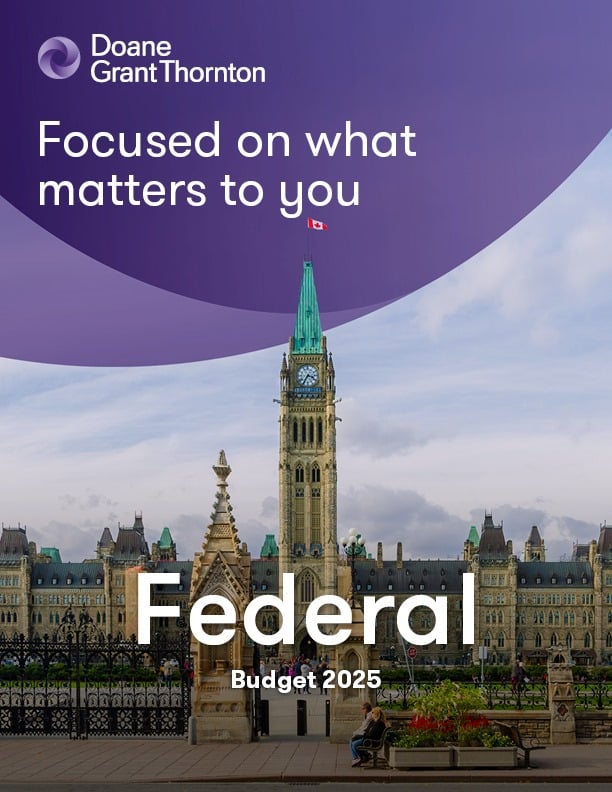-
Financial reporting and accounting advisory services
You trust your external auditor to deliver not only a high-quality, independent audit of your financial statements but to provide a range of support, including assessing material risks, evaluating internal controls and raising awareness around new and amended accounting standards.
-
Accounting Standards for Private Enterprises
Get the clear financial picture you need with the accounting standards team at Doane Grant Thornton LLP. Our experts have extensive experience with private enterprises of all sizes in all industries, an in-depth knowledge of today’s accounting standards, and are directly involved in the standard-setting process.
-
International Financial Reporting Standards
Whether you are already using IFRS or considering a transition to this global framework, Doane Grant Thornton LLP’s accounting standards team is here to help.
-
Accounting Standards for Not-for-Profit Organizations
From small, community organizations to large, national charities, you can count on Doane Grant Thornton LLP’s accounting standards team for in-depth knowledge and trusted advice.
-
Public Sector Accounting Standards
Working for a public-sector organization comes with a unique set of requirements for accounting and financial reporting. Doane Grant Thornton LLP’s accounting standards team has the practical, public-sector experience and in-depth knowledge you need.
-
Tax planning and compliance
Whether you are a private or public organization, your goal is to manage the critical aspects of tax compliance, and achieve the most effective results. At Doane Grant Thornton, we focus on delivering relevant advice, and providing an integrated planning approach to help you fulfill compliance obligations.
-
Research and development and government incentives
Are you developing innovative processes or products, undertaking experimentation or solving technological problems? If so, you may qualify to claim SR&ED tax credits. This Canadian federal government initiative is designed to encourage and support innovation in Canada. Our R&D professionals are a highly-trained, diverse team of practitioners that are engineers, scientists and specialized accountants.
-
Indirect tax
Keeping track of changes and developments in GST/HST, Quebec sales tax and other provincial sales taxes across Canada, can be a full-time job. The consequences for failing to adequately manage your organization’s sales tax obligations can be significant - from assessments, to forgone recoveries and cash flow implications, to customer or reputational risk.
-
US corporate tax
The United States has a very complex and regulated tax environment, that may undergo significant changes. Cross-border tax issues could become even more challenging for Canadian businesses looking for growth and prosperity in the biggest economy in the world.
-
Cross-border personal tax
In an increasingly flexible world, moving across the border may be more viable for Canadians and Americans; however, relocating may also have complex tax implications.
-
International tax
While there is great opportunity for businesses looking to expand globally, organizations are under increasing tax scrutiny. Regardless of your company’s size and level of international involvement—whether you’re working abroad, investing, buying and selling, borrowing or manufacturing—doing business beyond Canada’s borders comes with its fair share of tax risks.
-
Succession & estate planning
Like many private business owners today, you’ve spent your career building and running your business successfully. Now you’re faced with deciding on a successor—a successor who may or may not want your direct involvement and share your vision.
-
Tax Reporting & Advisory
The financial and tax reporting obligations of public markets and global tax authorities take significant resources and investment to manage. This requires calculating global tax provision estimates under US GAAP, IFRS, and other frameworks, and reconciling this reporting with tax compliance obligations.
-
Transfer pricing
Recognized as a leader in the transfer pricing community, our award-winning team can help you expand your business beyond borders with confidence.

-
Transactions
Our transactions group takes a client-centric, integrated approach, focused on helping you make and implement the best financial strategies. We offer meaningful, actionable and holistic advice to allow you to create value, manage risks and seize opportunities. It’s what we do best: help great organizations like yours grow and thrive.
-
Restructuring
We bring a wide range of services to both individuals and businesses – including shareholders, executives, directors, lenders, creditors and other advisors who are dealing with a corporation experiencing financial challenges.
-
Forensics
Market-driven expertise in investigation, dispute resolution and digital forensics
-
Cybersecurity
Viruses. Phishing. Malware infections. Malpractice by employees. Espionage. Data ransom and theft. Fraud. Cybercrime is now a leading risk to all businesses.
-
Consulting
Running a business is challenging and you need advice you can rely on at anytime you need it. Our team dives deep into your issues, looking holistically at your organization to understand your people, processes, and systems needs at the root of your pain points. The intersection of these three things is critical to develop the solutions you need today.
-
Creditor updates
Updates for creditors, limited partners, investors and shareholders.

-
Governance, risk and compliance
Effective, risk management—including governance and regulatory compliance—can lead to tangible, long-term business improvements. And be a source of significant competitive advantage.
-
Internal audit
Organizations thrive when they are constantly innovating, improving or creating new services and products and envisioning new markets and growth opportunities.
-
Certification – SOX
The corporate governance landscape is challenging at the best of times for public companies and their subsidiaries in Canada, the United States and around the world.
-
Third party assurance
Naturally, clients and stakeholders want reassurance that there are appropriate controls and safeguards over the data and processes being used to service their business. It’s critical.
-
 Assurance Important changes coming to AgriInvest in 2025AgriInvest is a business risk management program that helps agricultural producers manage small income declines and improve market income.
Assurance Important changes coming to AgriInvest in 2025AgriInvest is a business risk management program that helps agricultural producers manage small income declines and improve market income. -
 Tax alert Agricultural Clean Technology ProgramThe Agricultural Clean Technology Program will provide financial assistance to farmers and agri-businesses to help them reduce greenhouse gas (GHG) emissions.
Tax alert Agricultural Clean Technology ProgramThe Agricultural Clean Technology Program will provide financial assistance to farmers and agri-businesses to help them reduce greenhouse gas (GHG) emissions. -
 Tax alert ACT Program – Research and Innovation Stream explainedThe ACT Research and Innovation Stream provides financial support to organizations engaged in pre-market innovation.
Tax alert ACT Program – Research and Innovation Stream explainedThe ACT Research and Innovation Stream provides financial support to organizations engaged in pre-market innovation. -
 Tax alert ACT Program – Adoption Stream explainedThe ACT Adoption Stream provides non-repayable funding to help farmers and agri-business with the purchase and installation of clean technologies.
Tax alert ACT Program – Adoption Stream explainedThe ACT Adoption Stream provides non-repayable funding to help farmers and agri-business with the purchase and installation of clean technologies.
-
Builders And Developers
Every real estate project starts with a vision. We help builders and developers solidify that vision, transform it into reality, and create value.
-
Rental Property Owners And Occupiers
In today’s economic climate, it’s more important than ever to have a strong advisory partner on your side.
-
Real Estate Service Providers
Your company plays a key role in the success of landlords, investors and owners, but who is doing the same for you?

-
Mining
There’s no business quite like mining. It’s volatile, risky and complex – but the potential pay-off is huge. You’re not afraid of a challenge: the key is finding the right balance between risk and reward. Whether you’re a junior prospector, a senior producer, or somewhere in between, we’ll work with you to explore, discover and extract value at every stage of the mining process.
-
Oil & gas
The oil and gas industry is facing many complex challenges, beyond the price of oil. These include environmental issues, access to markets, growing competition from alternative energy sources and international markets, and a rapidly changing regulatory landscape, to name but a few.

Our experienced professionals summarize the key tax measures to help Canadian businesses and individuals understand the impacts and opportunities.
Get in touch with a Doane Grant Thornton advisor today.
Introduction
The budget emphasizes long-term capital investment over routine operating costs, with priorities including clean energy, critical minerals, housing, innovation, and national security. It introduces $32.5 billion in new capital spending over five years while targeting $60 billion in savings, and projects a balanced operating budget by 2028–29. As a result of the proposed measures, the federal deficit is expected to rise to $78.3 billion in 2025–26 before gradually declining.
The budget introduces several notable tax measures, including immediate expensing for eligible manufacturing and processing buildings, an increased expenditure limit under the Scientific Research and Experimental Development (SR&ED) program, and expanded clean economy tax credits. The budget also proposes significant updates to Canada’s transfer pricing rules, while leaving federal personal and corporate tax rates unchanged.
Additional measures aim to streamline the tax system, such as adjustments to qualified registered savings plans and broader anti-avoidance provisions related to the 21-year trust rule. The budget also removes certain taxes, including the Underused Housing Tax starting in 2025 and the luxury tax on specified aircrafts and vessels.
Read on to learn about these measures and more.

Federal Budget 2025
Our tax advisors provide insights on key tax measures in Budget 2025, detailing areas of interest for you and your business.
Business tax measures
Immediate expensing for M&P buildings
Budget 2025 proposes a temporary 100% deduction for the cost of eligible manufacturing and processing (M&P) buildings, including additions or alterations to existing buildings. This is provided that 90% or more of the floor space is used to manufacture or process goods for sale or lease, among other conditions. The current rules provide an accelerated capital cost allowance (CCA) rate of 10% for these types of buildings, provided a valid election is filed.
The purchase of used M&P buildings may also qualify, unless the taxpayer or non-arm's length person previously owned the property, or the property was transferred on a tax-deferred basis.
If the M&P building is no longer used for M&P subsequent to claiming the immediate expensing, there could be recaptured CCA into income.
The 100% deduction will apply to eligible property acquired on or after November 4, 2025 and used in a manufacturing process before 2030. Under a gradual phase-out, a 75% and 55% deduction will be available for eligible property first used in M&P between 2030 to 2031 and 2032 to 2033 respectively. M&P buildings acquired or first used in M&P after 2033 won’t be eligible for the enhanced rates.
Deferral of tax on investment income through tiered corporations
Rules governing the recovery of refundable dividend tax on hand (RDTOH) will be amended to prevent deferral of income tax on investment income earned by a Canadian-controlled private corporation (CCPC) resulting from intercorporate dividends paid between connected corporations with staggered year ends. Under current rules, a CCPC earning investment income benefits from an immediate refund of RDTOH after paying taxable dividends to a connected payee corporation which in turn pays Part IV tax based on the payer CCPC’s refund, irrespective of the payee corporation’s year end. This can result in a tax deferral, depending on the payee corporation’s balance-due date.
The proposed limitation suspends a payer corporation’s RDTOH refund where it is ‘affiliated’ with a payee corporation, and the payee corporation’s balance-due day occurs after that of the payer corporation. The suspended RDTOH refund will be released in a later taxation year of the payer corporation once the recipient corporation (and any affiliated corporation further up the corporate chain) has paid the dividend to a non-affiliated corporation or an individual shareholder. There are certain exceptions to the suspension rule, such as where the subsequent qualifying dividends are paid before the payer corporation’s balance-due day.
This proposal may impact private companies with intercorporate shareholdings and misaligned tax year-ends. The measure applies to dividends paid in taxation years that begin on or after November 4, 2025.
Extension of deferral of tax on patronage dividends
The deferral of tax and withholding obligations on patronage dividends received in the form of shares from agricultural cooperatives will be extended to apply to shares received before the end of 2030. The current rules, which were set to expire at the end of 2025, allow for a deferral of the tax and withholding requirements on these dividends until the year of disposition of the shares.
SR&ED tax incentive program
The SR&ED expenditure limit on which the enhanced 35% SR&ED investment tax credit can be claimed will be doubled to $6 million (from the previously announced $4.5 million). The existing limit is $3 million. This measure will apply retroactively to taxation years that begin on or after December 16, 2024.
The updated administration of the SR&ED program will provide businesses with greater certainty and speed when making investment and R&D decisions by:
- Introducing an elective pre-claim approval process for an upfront technical approval to give business greater certainty of their SR&ED projects’ eligibility prior to incurring costs. If selected for an expenditure review, the CRA pledges to reduce review processing days to 90 days (from 180) for these claims.
- Increasing the use of AI tools to focus audit and verification efforts on higher-risk claims and allowing lower-risk claims to proceed faster.
- Streamlining the review process by reducing certain information requirements.
These administrative changes will be implemented into SR&ED program operations as of April 1, 2026.
Additionally, the CRA intends to further improve administration by engaging in targeted consultations, including a review of the SR&ED claim form (T661). Previously proposed measures will also proceed, including increasing prior-year taxable capital phase out for enhanced credit, allowing eligible Canadian public corporations to access the enhanced credit, and restoring capital expenditures eligibility.
Clean economy tax incentives
Budget 2025 proposes several changes to pre-existing clean economy tax incentives:
Clean Technology Manufacturing investment tax credit
The list of critical minerals eligible for the 30% refundable Clean Technology Manufacturing investment tax credit will expand to include five new minerals. Property to extract, process, or recycle these newly eligible minerals that’s acquired and becomes available for use on or after November 4, 2025 will qualify for this ITC.
Carbon Capture, Utilization and Storage investment tax credit
The phase-out period of the Carbon Capture, Utilization and Storage (CCUS) investment tax credit will be deferred by extending the full credit rates to 2035. Under the proposed rules, the full credit rates, which range from 37.5 - 60%, will apply to eligible expenditures incurred until the end of 2035, while the tax credit will reduce to half of the full credit rates for eligible expenditures incurred from the start of 2036 to the end of 2040.
Clean Electricity investment tax credit
The list of eligible entities for this 15% refundable credit will expand to include entities in the Canada Growth Fund. Also, financing from the Canada Growth Fund received by taxpayers will not reduce the cost of eligible property for the purpose of calculating the tax credit. This expansion applies to eligible property that is acquired and becomes available for use on or after November 4, 2025.
Critical mineral exploration tax credit
The list of critical minerals eligible for the 30% Critical Mineral Exploration Tax Credit (CMETC) is being expanded to include 12 previously excluded critical minerals including bismuth, manganese, and tungsten. The CMETC allows investors holding flow-through shares an additional tax incentive on renounced specified mineral exploration expenses incurred in Canada. This measure will apply to expenditures renounced under eligible flow-through share agreements entered into after November 4, 2025 and on or before April 1, 2027.
Eligible activities under the Canadian Exploration Expense
The definition of Canadian exploration expense (CEE) will be amended to specifically exclude expenses related to determining the economic viability or engineering feasibility of mineral resource. This amendment pre-empts the application of a recent Supreme Court of British Columbia decision relating to the interpretation of the provincial equivalent of the federal CEE definition to the federal regime. This proposed measure is effective November 4, 2025.
Personal tax measures
Personal Support Workers Tax Credit
The Personal Support Workers Tax Credit is a proposed refundable credit equal to 5% of eligible earnings, up to a maximum of $1,100. The credit is available to certain eligible personal support workers, who provide certain health care services in specific regulated health care establishments. Amounts earned in BC, Newfoundland and Labrador, and the Northwest Territories are excluded because of pre-existing federal funding agreements in those provinces. This measure will apply to the 2026 to 2030 taxation years.
Automatic federal benefits for lower-income individuals
The CRA will have discretion to file a tax return for a taxation year on behalf of an individual who meets all the following criteria:
- An individual’s taxable income for the year is below the lower of the federal or provincial basic personal amount (plus age and/or disability amounts, if applicable).
- All income for the year is from sources for which specified information returns have been filed with the CRA (e.g., T4 information slips).
- Individual hasn’t filed a tax return at least once in the three preceding years.
- Individual hasn’t filed a tax return for the applicable year prior to or within 90 days of the tax filing deadline.
- Any other criteria, as determined by the CRA.
This measure is meant to bring more individuals into the system so that they’ll qualify for credits and benefits that might otherwise go unclaimed without a tax return filing. The CRA will provide the individual with a summary of the information being used to prepare the tax return prior to filing on their behalf and allow 90 days for the taxpayer to submit changes. This measure will apply to the 2025 and subsequent taxation years. This proposal is subject to a consultation period ending January 30, 2026.
Top-up tax credit
The top-up tax credit maintains a 15% tax rate for non-refundable tax credits in rare instances where the credits exceed the first federal income tax bracket threshold. Non-refundable tax credits are generally applied at the lowest marginal income tax rate and existing proposals in Bill C-4 could reduce the first marginal income tax bracket to 14.5% (from 15%) in 2025 and 14% in 2026 and subsequent years. The credit is intended to ensure individuals don’t have a higher tax liability if Bill C-4 is enacted. This measure will apply to the 2025-2030 taxation years.
Qualified investments for registered plans
Rules related to investments that can be held in registered plans will be simplified. In particular, Registered Disability Savings Plans (RDSPs) will be permitted to acquire shares of specified small business corporations, venture capital corporations, and specified cooperative corporations. Shares of eligible corporations, and interests in small business investment limited partnerships, and small business investment trusts won’t be permitted going forward. These amendments will apply as of January 1, 2027. Accommodating provisions will allow for investments in small business investment limited partnerships and small business investment trusts made prior to 2027.
Home Accessibility Tax Credit
A taxpayer can no longer claim expenses under both the Medical Expense Tax Credit and the Home Accessibility Tax Credit. The Home Accessibility Tax Credit is a non-refundable credit available for certain eligible renovation expenses that improve the home’s safety, accessibility or functionality for individuals 65 or older or eligible for the Disability Tax Credit. The Medical Expense Tax Credit applies to medical and disability-related expenses, which can include costs to build or renovate a home to improve access or mobility for persons with disabilities. Individuals can currently claim both credits for expenses that meet both sets of eligibility criteria. The amendment will apply to the 2026 and subsequent taxation years.
21-year rule
The current anti-avoidance rules that prevent postponing the deemed disposition of property in a trust by making direct trust-to-trust transfers of property will be broadened to include indirect transfers of property to other trusts. These anti-avoidance rules are in place to support adherence with the rule that deems a personal trust to have disposed of its capital property on the 21st anniversary of the trust’s creation to prevent an indefinite postponement of tax on accrued gains. The proposal will expand the scope of the anti-avoidance rule effective for transfers of property on or after November 4, 2025.
Canada Carbon Rebate
Taxpayers will no longer receive Canada Carbon Rebate (CCR) payments on tax returns or adjustment requests filed after October 30, 2026. The CCR was a mechanism intended to return proceeds from the federal fuel charge directly to eligible Canadians. This amendment to the CCR is intended to support the winding down of this mechanism as the federal fuel charge was removed as of April 1, 2025.
Sales tax and excise measures
Underused Housing Tax
The Underused Housing Tax (UHT) rules will no longer apply after the 2024 calendar year. This measure will end the three-year program aimed at increasing the Canadian housing supply. Currently, the federal UHT rules require affected owners to file a UHT return with the CRA annually for each reportable property. Unless the owner is eligible to claim an exemption, the tax is collected at 1% of the fair market value of vacant or otherwise underused residential property. While the UHT rules will no longer apply for 2025 and beyond, returns and remittances, as well as applicable interest and penalties will still be enforced for the 2022-2024 calendar years.
Luxury tax
Budget 2025 eliminates the luxury tax on specified aircraft and vessels, including sales, imports, and improvements on these items. However, the tax will continue to be payable on vehicles valued in excess of $100,000. The luxury tax continues to apply at a rate that is equal to the lesser of 10% of the total value of the vehicle and 20% of the value above $100,000.
Registered vendors of specified aircraft and vessels are required to file a final return that includes November 4, 2025 and registrations will be maintained after this date to allow vendors to claim their eligible rebates. Registrations for aircraft and vessels/boats will be cancelled on February 1, 2028 with no rebate claims available after this date.
These changes will be effective after November 4, 2025.
GST rebate on housing for first-time home buyers
GST is being removed for first time buyers on new homes valued at no more than $1 million and for new homes valued between $1 million and $1.5 million the GST is reduced. This change is currently before parliament, included in Bill C-4.
GST/HST on manual osteopathic services
Budget 2025 clarifies that osteopathic services provided by anyone other than an osteopathic physician are considered a taxable supply for GST/HST purposes. This clarification stems from the recent establishment of a provincial regulatory body to govern the practitioners of manual osteopathy in New Brunswick causing osteopathic services provided by individuals that were not physicians to qualify as tax-exempt.
Fraud prevention for specific telecommunication services
A reverse charge mechanism (RCM) targeting the telecommunications industry will be introduced for the first time to combat “carousel fraud” schemes.
The RCM would apply to specific supplies of telecommunication services that allow forspeech communication and the transmission of writing, images, and sounds or information of any nature when provided in connection with services that enable such speech communication.
For example, these rules will apply to voice-over internet protocol (VoIP). This is a departure from how suppliers generally invoice and remit GST/HST. Instead, the suppliers of these services will no longer charge GST/HST but need to note on their invoices that the RCM applies and the customer will have to self-assess the GST/HST that applies on their return. At this point in time, RCM will only apply to qualifying purchases of telecommunication services acquired for the sole purpose of resupply by the purchaser.
These proposals are subject to a consultation period ending January 12, 2026.
Duty relief for goods donated to charities
A duty drawback will be allowed on certain goods that are donated to a registered charity, if the goods will be used in the charities’ programs rather than resold. This change will be made through amendments to the Customs Tariff Act.
International tax measures
Transfer pricing
The 2025 reforms represent a significant modernization of Canada’s transfer pricing regime, bringing it into alignment with international standards and increasing both the clarity and the compliance burden for affected taxpayers. Early preparation and proactive review of transfer pricing policies and documentation are essential to manage risk under the new rules. The new rules will require a more detailed, two-step analysis of cross-border transactions between Canadian taxpayers and non-arm’s length non-residents to align more closely with the latest version of the OECD’s transfer pricing guidelines. Transactions must now be “delineated” with reference to their “economically relevant characteristics,” including contractual terms as well as the conduct of the parties, functions performed, assets used, risks assumed, characteristics of property or services, economic circumstances, and business strategies. The “conditions” of a transaction will be interpreted more broadly, going beyond price and contractual terms to include all relevant commercial and financial information relevant to the determination of the initial or adjusted amounts. This is a significant shift from the previous focus on the terms and conditions of contractual arrangements.
The new rules clarify that the comparison for transfer pricing purposes is to the conditions that would have existed had the actual parties to the transaction been dealing at arm’s length in comparable circumstances, rather than to hypothetical unrelated parties.
A new non-recognition and replacement rule allows the CRA to disregard and replace the actual transaction with an alternative arm’s length transaction if the actual transaction includes conditions different from arm’s length conditions.
The budget also introduces an explicit requirement to interpret and apply the transfer pricing rules in a manner consistent with the OECD’s latest transfer pricing guidelines, providing greater certainty and alignment with international standards.
Budget 2025 also proposes to:
- Increase the transfer pricing reassessment de-minimis threshold for the application of transfer pricing penalty from the lesser of 10% of revenues or $5,000,000, to the lesser of 10% of revenues or $10,000,000.
- Clarify the transfer pricing documentation requirements and provide simplified documentation requirements when prescribed conditions are met.
- Shorten the deadline for a taxpayer to deliver their transfer pricing documentation to the CRA after a request to 30 days (from 3 months).
Canadian multinational businesses that have transactions related foreign entities should review relevant cross border transactions and determine whether and how these new transfer pricing rules may impact these transactions. The reduced number of days taxpayers have to respond to the CRA for request of transfer pricing documentation makes it imperative for affected businesses to prepare complete transfer pricing documentation on a contemporaneous basis. These proposed changes to the transfer pricing rules will take effect for taxation years and fiscal periods that begin after November 4, 2025.
Investment income derived from assets supporting Canadian insurance risks
Budget 2025 clarifies that a taxpayer must include a foreign affiliate’s investment income derived from assets held to back specified Canadian risks in foreign accrual property income (FAPI). Under current rules, a foreign affiliate’s income from a business involving the insurance or reinsurance of Canadian risks may be deemed to be from a non-active business (resulting in FAPI and inclusion in taxable surplus).
This change expands this deeming rule to apply to income from any property held in connection with the insurance or reinsurance of specified Canadian risks—regardless of which entity holds the property.
This proposed measure will apply to taxation years of a foreign affiliate that begin after November 4, 2025.
Previously announced measures
Budget 2025 confirms the government’s intention to proceed with several previously announced measures in Budget 2024, the 2024 Fall Economic Statement, and in certain draft legislation, as modified from consultations with stakeholders. Some key previously announced proposals include:
- Amendments to the new trust reporting rules, including changes to reporting requirements for bare trusts that apply to taxation years ending on or after December 31, 2026.
- Extension of the accelerated investment incentive and immediate expensing measures, providing for accelerated CCA write-offs for qualifying purchases.
- Accelerated CCA for eligible purpose-built rental housing and productivity-enhancing assets.
- Removal of GST on construction of eligible new student residences and purpose-built housing built by cooperative housing corporations.
- Lifetime capital gains exemption increases to $1.25 million.
- Amendments related to the $10 million capital gains exemption available for certain qualifying business transfers to employee ownership trusts.
- Expansion of non-profit organizations (NPOs) subject to reporting requirements, for tax years beginning January 1, 2027 and onwards (up from the proposed 2026 tax years and onwards).
Notably absent from this list is the proposed Canadian Entrepreneur’s Incentive announced in Budget 2024, which appears to be cancelled under this budget.
|
Our National Tax Leader, Tara Benham, discusses these measures and more. Watch here: Federal Budget 2025 | Doane Grant Thornton |
Have questions? Let’s talk. Contact your local advisor or reach out to us here.
Visit our Budget 2025 hub to learn about the tax measures introduced in this year's federal and provincial budgets.
Disclaimer
The information contained herein is general in nature and is based on proposals that are subject to change. It is not, and should not be construed as, accounting, legal or tax advice or an opinion provided by Doane Grant Thornton LLP to the reader. This material may not be applicable to, or suitable for, specific circumstances or needs and may require consideration of other factors not described herein.
Get the latest information in your inbox.
Subscribe to receive relevant and timely information and event invitations.



